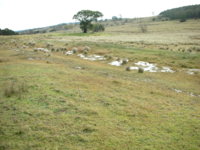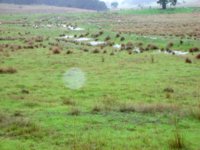- Thread starter
- #21
The Old Ram-Australia
Herd Master
- Joined
- Jan 18, 2011
- Messages
- 994
- Reaction score
- 2,170
- Points
- 303
G'day, you may have noticed I have corrected a couple of things in my last post.The local village was settled in the mid 1800's,otherwise we would have been here before Cpt Cook,I also checked our approval and we can use up to an 8 inch case for the bore.
Down here BM we call these "swales" and yes we have quite a few they were installed about 30 odd years ago as near as I can tell to try yo repair "raging" erosion on our sloping ground.But subsequent owners did not manage them (at all)) and so by the time we purchased the farm they were in fact ineffective.

Down here BM we call these "swales" and yes we have quite a few they were installed about 30 odd years ago as near as I can tell to try yo repair "raging" erosion on our sloping ground.But subsequent owners did not manage them (at all)) and so by the time we purchased the farm they were in fact ineffective.


